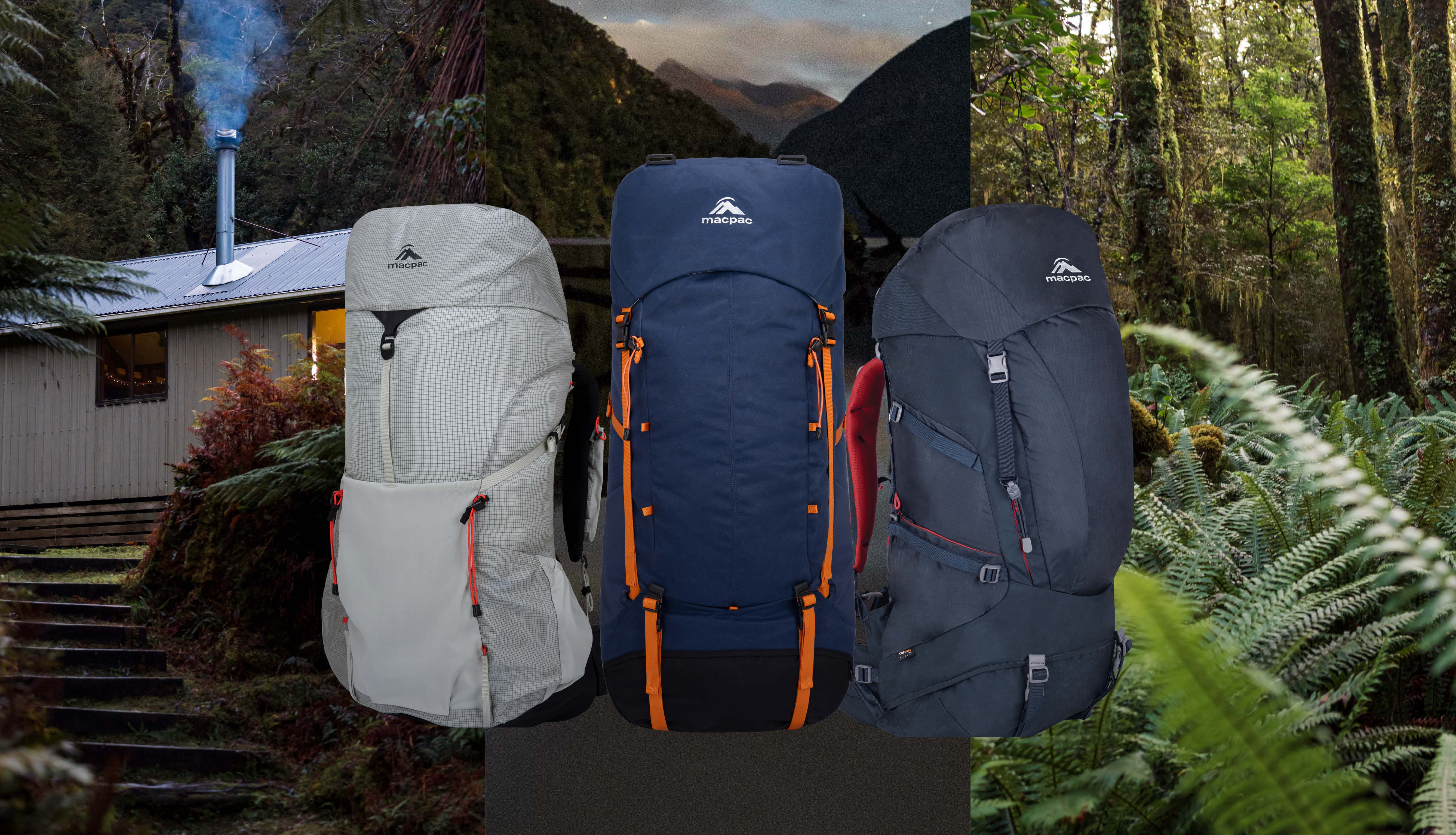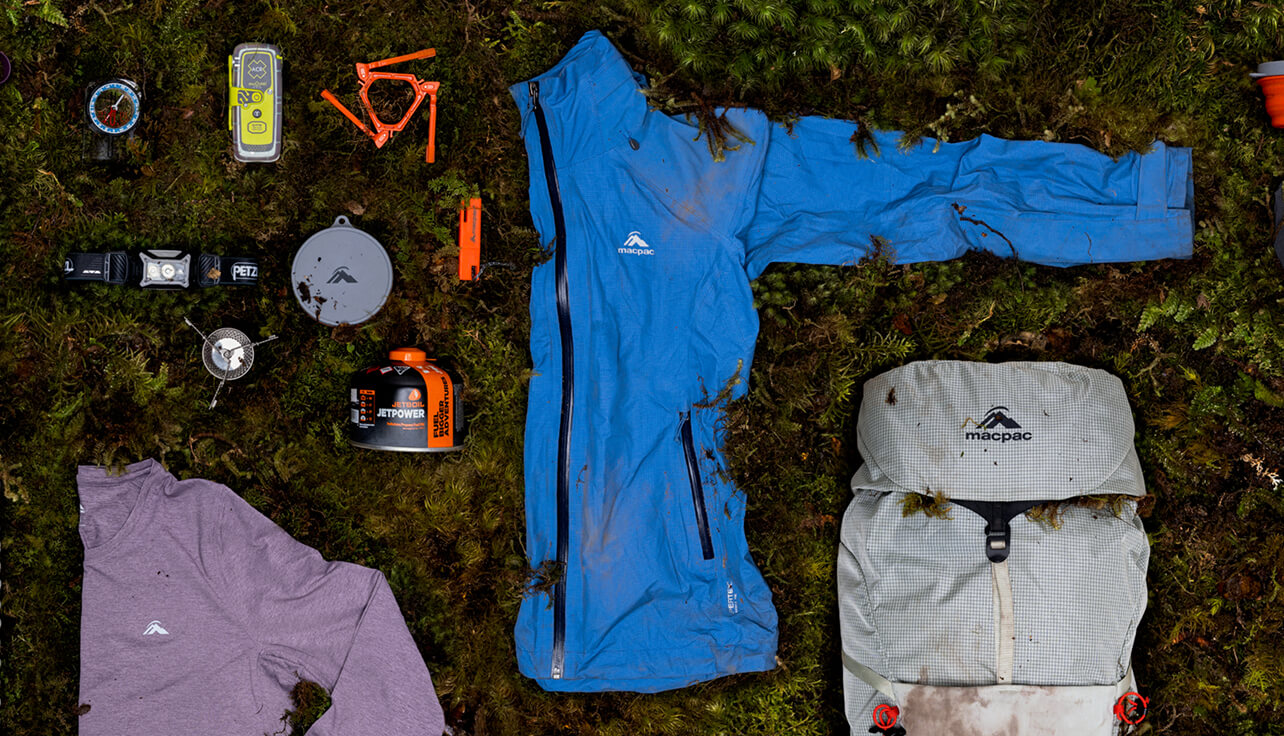You can see a lot on an overnight hike and cover a lot of ground. The best parts of an overnight hike? Watching the sunset with dinner over an epic view, playing cards in the huts with strangers and waking up to a sunrise through your tent door.
But what exactly do you need to pack for an overnight hike, and how do you travel fast and light without sacrificing safety or comfort? Here’s what to bring on an overnight mission. Want a list to tick off? Check out our handy packing lists.
What Pack Do I Need?
You’ll need a pack that can comfortably carry all the essentials plus your overnight gear.
For most overnight hikes, a 40–50L pack is a good size. It gives you space for a tent or shelter, sleeping gear, food, and clothing. For winter, a slightly larger pack can be useful for carrying a bigger sleeping bag, snow or ice equipment, and additional layers.
Look for features like:
- A hip belt and chest strap for load stability
- Pockets that make water easily accessible
- External loops for poles or tools
- A built-in whistle
- Additional external pockets for snacks or small essentials
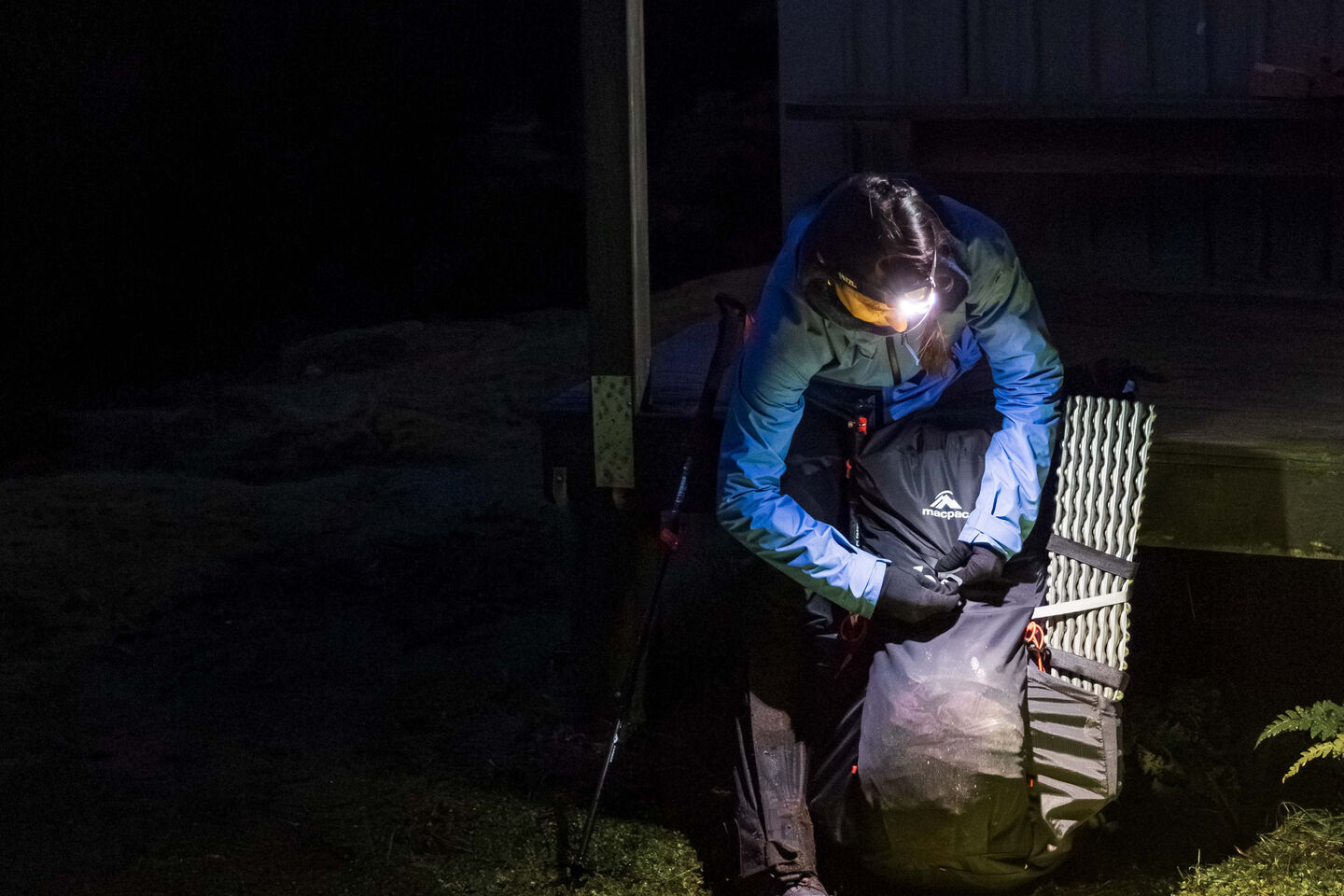
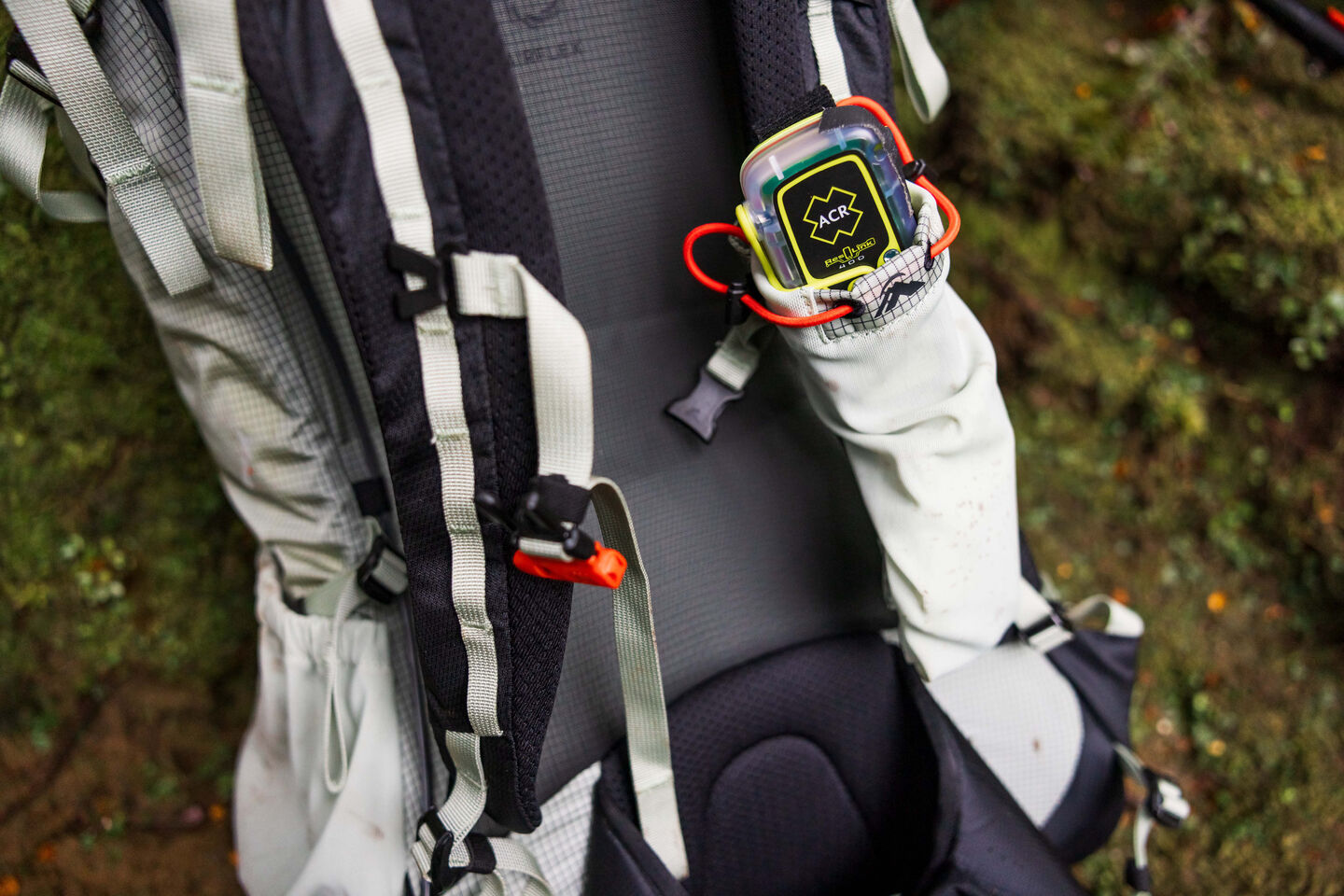
What Do I Pack?
Let’s break it down into categories.
Health & Safety
- PLB (Personal Locator Beacon): available for hire at many outdoor stores including Macpac!
- First aid kit: make your own or buy a pre-made one
- Whistle
- Emergency blanket
- Insect repellent
- Personal medications
Base layers:
- Base layer top (merino or synthetic)
- Base layer bottoms or thermal leggings
- Moisture-wicking underwear (merino is a great choice)
- Spare socks
- Camp socks (thicker, clean pair just for camp and sleeping)
Mid layers:
- Fleece or merino pullover
- Insulated jacket (down or synthetic as long as it’s packable)
- Warm hat or beanie
- Gloves/liner gloves
Outer layers:
- Waterproof and windproof rain jacket with hood
- Waterproof rain pants (optional but recommended in bad weather)
- Buff or neck gaiter for wind, sun, or dust
Food & Water
Water: Carry enough for drinking, cooking and cleaning. Depending on the distance of your hike, aim for 2.5–3 litres if there is no reliable water source along the way. Water filter or purification tablets are also handy to have if you’re filling up from any streams of lakes.
Breakfast: Oats/muesli/protein bar (take your pick!)
Snacks: Choose your favourites for the trail
- Nuts
- Muesli bars
- Bliss balls
- Dried fruit for a sugar hit
- Fun extras like chocolate or sweets
- Electrolytes for longer/hotter trips
Lunch: Wraps are a great option. Easy to pack and won’t squash easily.
Dinner: Freeze-dried meals, quinoa, or other lightweight, high-calorie options with protein.
Cooking gear (your camp kitchen):
- Lightweight stove or a compact canister stove like a Jetboil
- Pot (if using a stove)
- Collapsible mug
- Collapsible bowl
- Long handle titanium spoon or spork
- Knife or multi-tool (optional)
- Waterproof matches or lighter (depending on stove type)
- Small cleaning cloth or sponge (optional)
- Small rubbish bag (for packing out all your waste)
Sun Protection:
- SPF 50+ sunscreen
- Cap or sun hat
- Sunglasses
- SPF lip balm
Other Bits & Pieces:
- Loo paper
- Sitting mat (optional)
- Poles (optional)
- Headlamp or torch
- Lightweight towel (optional)
- Small toiletries kit (toothbrush, toothpaste, etc.)
- Map and compass or GPS device
- Lightweight camp shoes like jandals (nice for airing feet at camp)
- Ear plugs (handy for sleeping, especially in the huts)
- Dry bags or ziplock bags (to keep clothes and electronics dry)
- Pack raincover (keeps gear dry)
Don’t be tempted to overpack just because you’ve got the space. Sticking to the essentials is always a good idea.
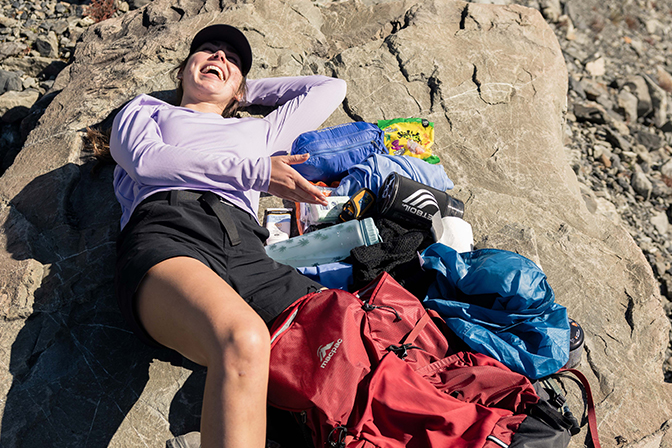
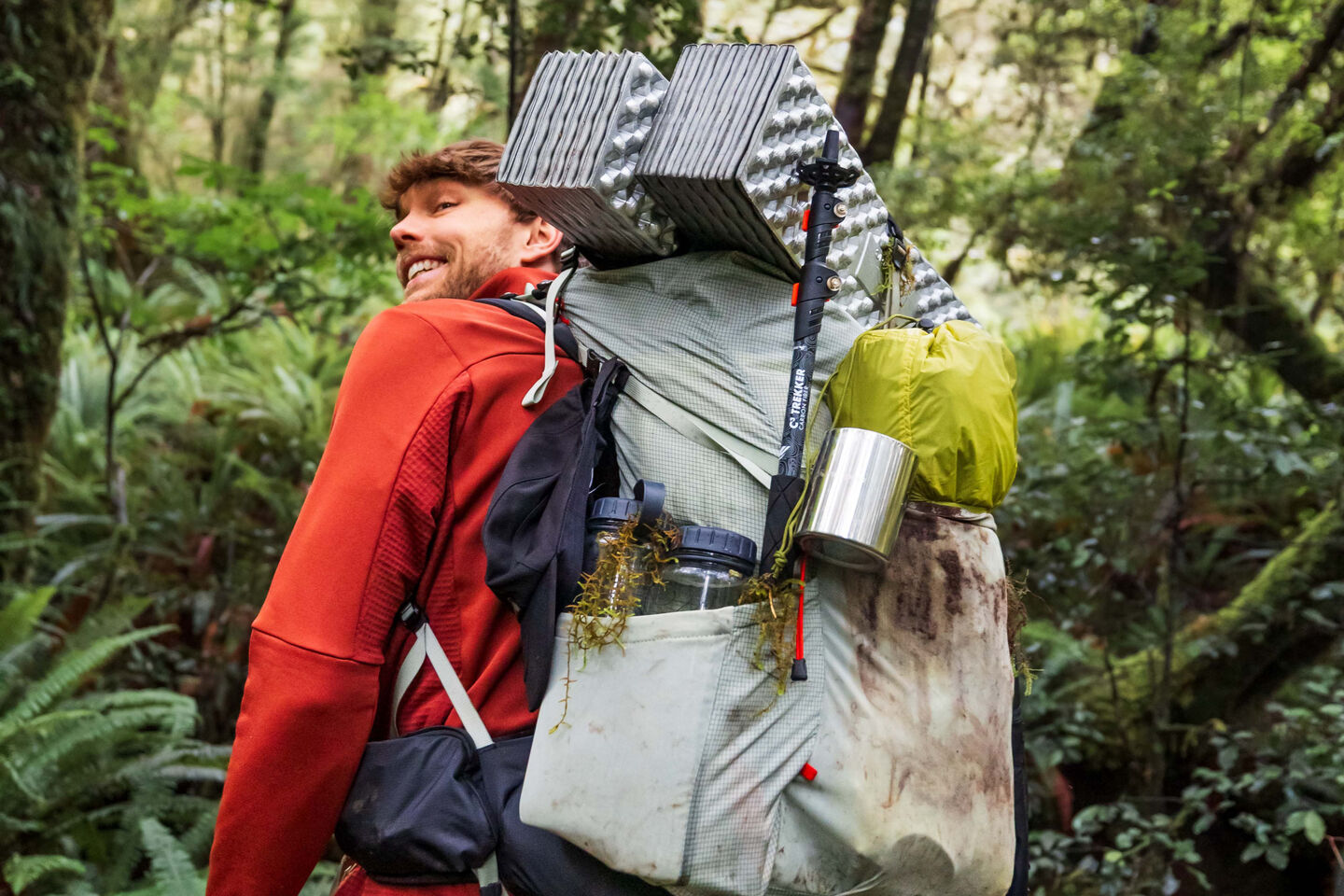
How to Pack?
Packing your overnight pack is all about balance and convenience.
Items that you won’t need to access often go at the bottom of your pack, like your tent and sleeping bag. For better balance, pack your heaviest items sitting as close to the middle of your back as possible. Doing so will ensure your load is stable while you walk, and it will keep you from feeling top or side heavy.
Lighter or frequently used items (like your rain jacket or an extra warm layer) should be near the top.
Snacks, sunscreen, and other small essentials can go in external pockets, but if it starts to rain, pop them into your pack liner so you’re not left with soggy supplies.
Tip: Pack everything into a single large dry bag or multiple smaller ones to protect your gear from unexpected weather. It also makes it easier to find what you need when you need it.


